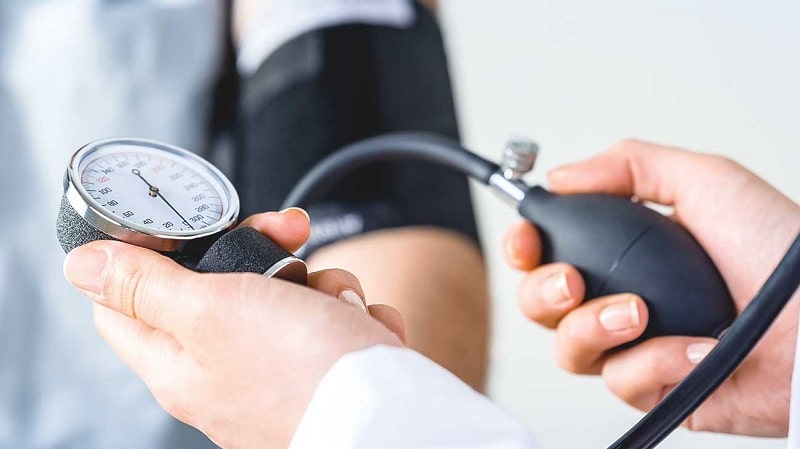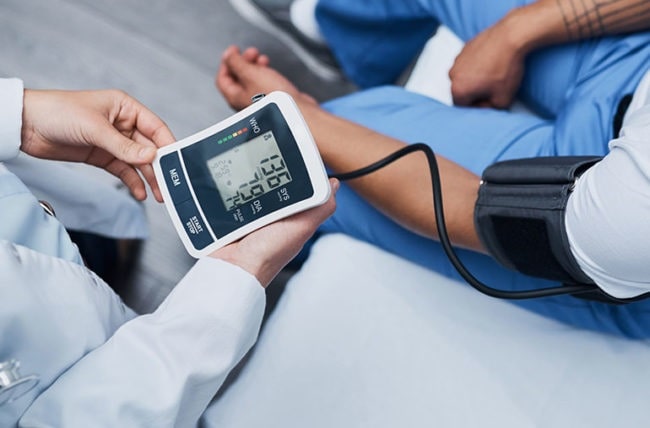Blood pressure typically means the amount of force that blood exerts on your blood vessels as it passes through them. It is crucial that you take blood pressure frequently to ensure your body is okay and the heart is functioning well.
When measuring blood pressure, there is the upper number referred to as systolic and the lower number, which is diastolic. Systolic shows the pressure that the heart contracts when pumping blood while diastolic is the pressure between heart pumping bits that is when the heart relaxes.
Contents

If you’ve had your blood pressure taken before by your doctor, nurse, or medical caregiver, then you must have realized that they took blood pressure on your left arm. This has always been advisable since the arm is more relaxed without much activities that it perform as compared to the right arm.
On some occasions, blood pressure is taken in both arms to check some circulatory issues. For instance, a difference of more than ten mmHg on both arms could signal dangerous diseases like peripheral artery disease, among other heart problems.
With a proper diet and a healthy lifestyle, controlling blood pressure isn’t a hard task as it seems. In fact, just a little modification to your lifestyle can kick away hypertension. Here are tips you can follow to do this;
Practice being active to keep your body fit and burn excess calories and fats. You can opt to walk to work if it is near, rather than driving.
Eat low- fat food with less sodium added to it. Eat plenty of fruits and vegetables, especially those with potassium like banana, as they are the best natural heart’s medicine.
Kick away any unhealthy habits that may pose a danger to your heart and body like smoking and taking alcohol.
As much as stress is normal, too much if it often increases the risk of getting heart diseases. You can help your heart and body relax by engaging in enjoyable tasks like walking, yoga, or swimming, among others.

Frequent monitoring of blood pressure helps you identify any problems and know how best you can manage them with your doctor.
It is usual for blood pressure to vary at different times of the day and also depending on temporary factors like stress, caffeine, cold temperature, and certain drugs. Always follow your care giver’s instructions on when and after how long you should take your blood pressure.
Before doing this make sure;

A blood pressure monitor comes with an instruction kit, whether digital or manual, that has to be carefully followed to the later. Below is a guideline;
Using your middle and index fingers, lightly press at the elbow bend to locate a pulse, which is most likely that of the brachial artery. If this doesn’t work, use a stethoscope or an arm cuff.
Slide your arm into the cuff, making sure the artery lies just beneath the stethoscope head. In a manual monitor, the stethoscope is often marked for easy identification. The end of the cuff should be slightly above your elbow.
Snugg the cuff, a little bit less tight using the Velcro wrap.
If using a manual machine
Use your right hand to hold the bulb and place the pressure gauge on your left.
Use the screw on the bulb to close the valve that allows the flow of air.
Squeeze the bulb to allow air into the cuff. At this point, your pulse can be heard in the stethoscope.
Squeeze in as much air as you can, preferably about 30 mmHg, while watching the gauge. It is now hard to hear the pulse.
Open the valve to allow air out, and slowly deflate the cuff while watching the gauge. The gauge needs to fall by about three mmHg in every heartbeat.
Carefully time the first pulse and note the reading as this is your systolic pressure.
Keep on deflating the cuff slowly.
Once the pulse beats disappear, note the reading as it is your diastolic pressure.
Let the cuff deflate completely.
With a digital machine;
Use your right hand to hold the bulb
Put on the device on the power button. Once you see display symbols and 0, your machine is ready for the work.
Allow air into the cuff as you watch the gauge until it is somewhat 30 points more than your normal systolic pressure.
Relax and keep your eyes on the monitor.
Pressure readings and pulse rates will start to appear on the screen.
When you hear a beeping sound, it means the whole process is complete. Take note of the readings on both sides of the display. Systolic readings come on the left while diastolic on the right. After this, you can see your pulse rate.
Let the cuff slowly lose the collected air.
Ensure you record the time, date, and both diastolic and systolic pressure for future reference.
Below are some things that can cause inaccurate readings;
1. Wrong size of the cuff.
Use the correct size of the cuff that is directly related to your hand’s circumference for an accurate reading.
2. Wrong cuff usage
The cuff should be wrapped in the right position, above the brachial artery to capture the pulse rate and blood pressure. Do not wrap it too lose or too tight. The instructions manual should guide you on this.
3. Body posture
Your body posture during measurements will determine how your results will come out. This is why you are advised to sit upright, feet flat, cuff at the heart level, and arms resting on the table. Do not move before the whole process is done.
 |
 |
 |
 |